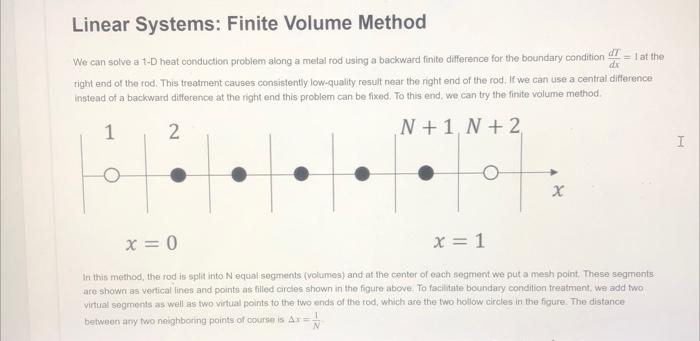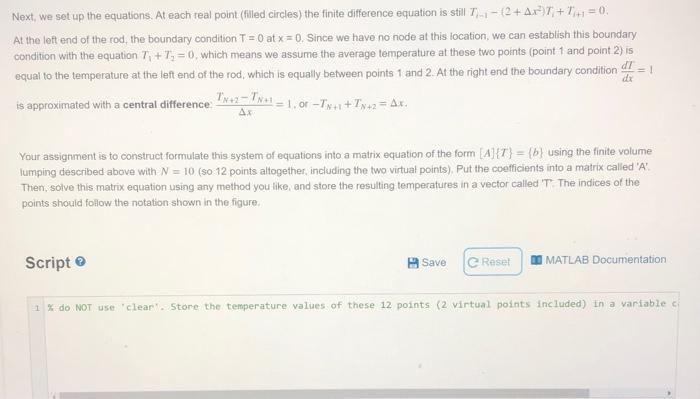Linear Systems: Finite Volume Method We can solve a 1-D heat conduction problem along a melal rod using a backward finite difference for the boundary condition dxdT=1 at the right end of the rod. This treatment catises consislently low-quality result near the night end of the rod. If we can use a central difference instead of a backward difference at the right end this problem can be fixed. To this end, we can try the finite volume method. x=0x=1 In this method, the rod is split into N equal segments (volumes) and at the centor of each segment we put a mesh point. These segments ate shown as vertical fines and points as filled circles shown in the figure above. To faciliate boundary condition treatment, we add two virtual segments as well as two virtual points to the two ends of the rod, which are the two hollow circles in the figure. The distance between any two neighboring points of course is x=N1 Next, we set up the equations. At each real point (filed circles) the finite difference equation is still Ti1(2+x2)Ti+Ti+1=0. At the left end of the rod, the boundary condition T=0 at x=0. Since we have no node at this location, we can establish this boundary condition with the equation T1+T2=0, which means we assume the average temperature at these two points (point 1 and point 2 ) is equal to the temperature at the left end of the rod, which is equally between points 1 and 2 . At the right end the boundary condition dxdI=1 is approximated with a central difference: xTN+2TN+1=1, or TN+1+TN+2=x. Your assignment is to construct formulate this system of equations into a matrix equation of the form [A]{T}={b} using the finite volume lumping described above with N=10 (so 12 points altogether, including the two virtual points). Put the coefficients into a matrix called ' A : Then, solve this matrix equation using any method you like, and store the resulting temperatures in a vector called 'T. The indices of the points should follow the notation shown in the figure. Script 0 I \% do not use 'clear'. Store the temperature values of these 12 points ( 2 virtual points included) in a variable








